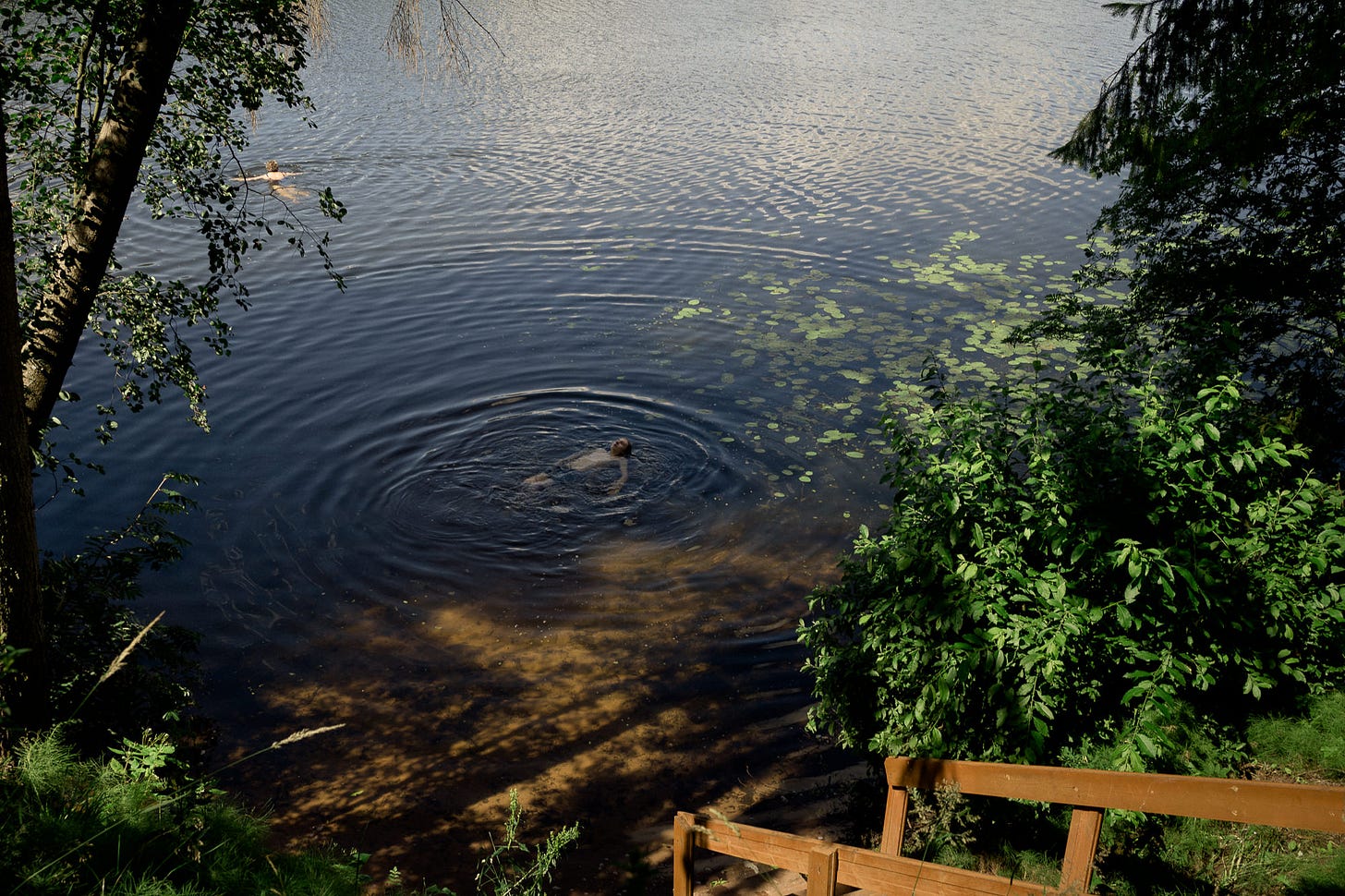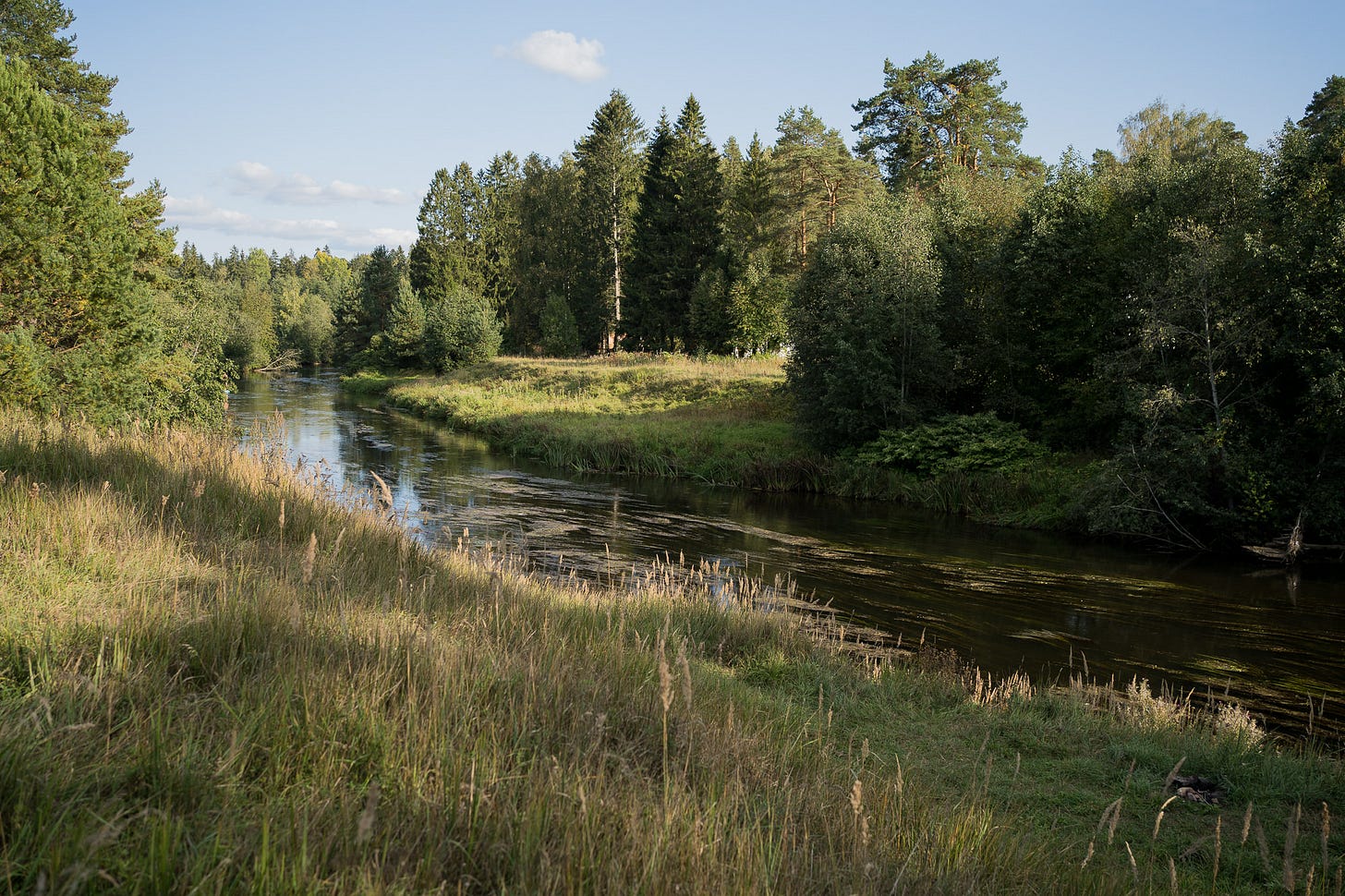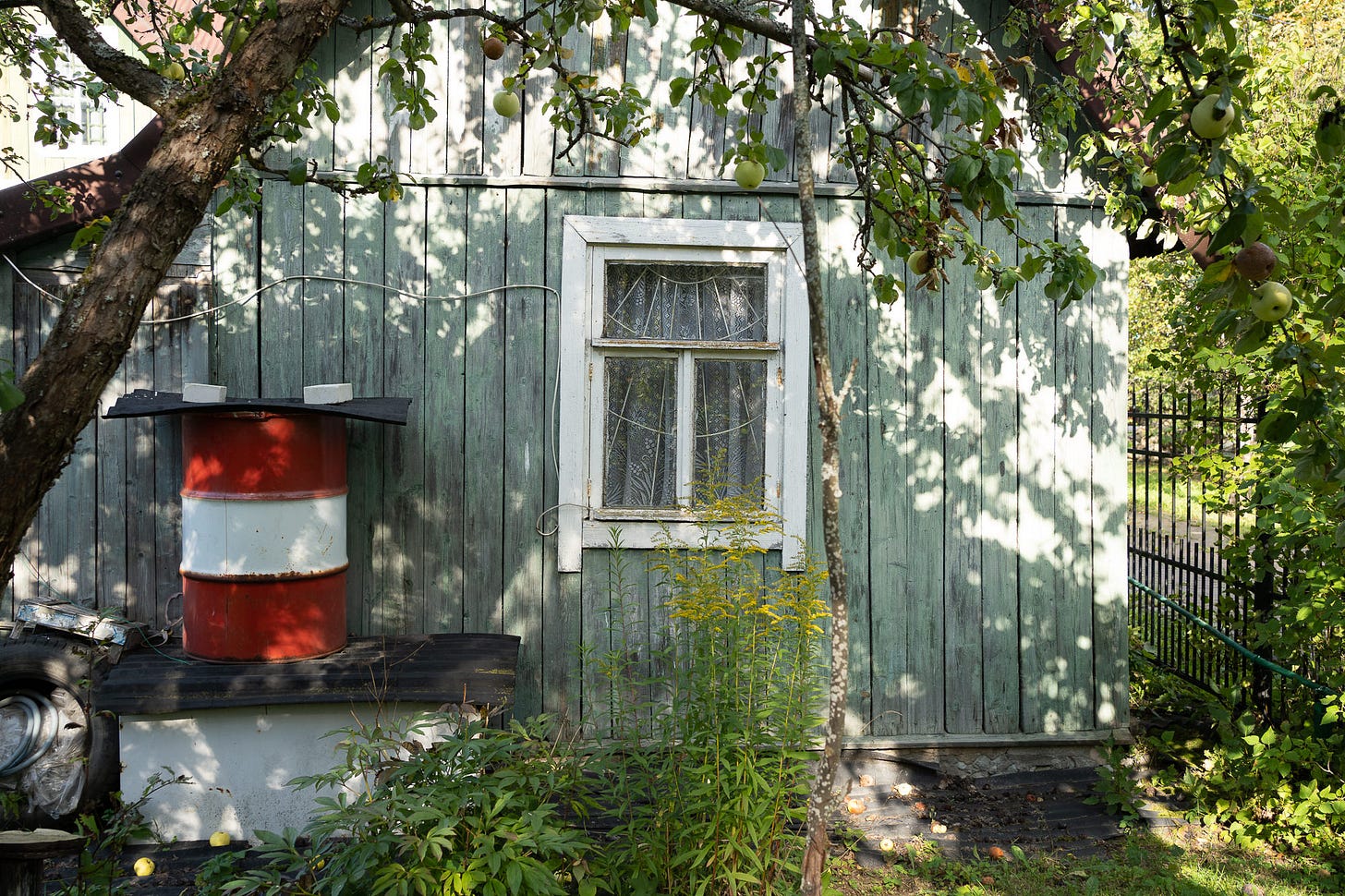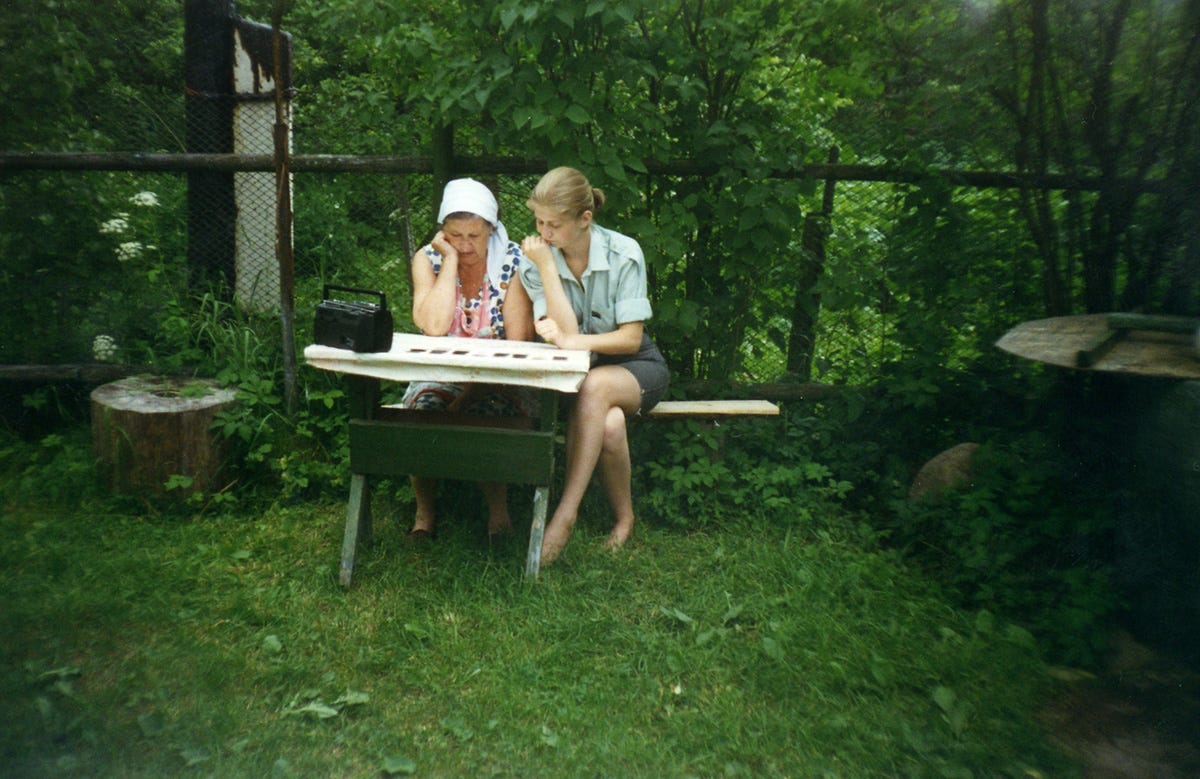The settlement of Vyritsa is situated about an hour’s drive outside of St Petersburg, Russia. The scenic drive south and away from the city takes you past fields, forests and picturesque old villages.
About two thirds of the way there, you pass the small village of Kobrino where you will find the original (dating back to 1800s) and preserved house of Alexander Pushkin’s nanny (now a museum of peasant life), whom the great Russian poet commemorated in many of his verses:
A friend of my severe days,
Decrepit darling dove of mine!
In deep pine woods alone you wait
For me, you wait too long a time.
In your front room under the window
You grieve as if you sentry stand,
And needles linger every minute
In your fatigued and puckered hands.
Turn left and make a short detour to Suida, where the manor of Alexander Pushkin’s great-grandfather Abram Gannibal (an enslaved boy from Africa who became a Russian general) - still stands, alongside a large arrow-shaped pond and the centuries-old oak that also features in Pushkin’s epic fairytale poem Ruslan and Ludmila:
There is a green oak by the bay,
And on the oak a chain of gold:
A learned cat, both night and day,
Circles upon that chain, of old:
And to the right – he spins a song,
And to the left – a tale of wrong.
Some kids set fire to the old oak, and it burned down. I don’t have any pictures of it.
In the summer, you can stop on the side of the road and buy apples, cucumbers, raspberries, gooseberries, redcurrants, honey and eggs from people’s gardens. Sometimes you get lucky and catch an old dedushka (a granddad, but in Russian we’d use it to affectionately describe any elderly man, not necessarily related to you) selling his haul of wild mushrooms from the nearby forest, saving you hours of foraging (and litres of blood left as a tribute to the local mosquitoes). Rough-stemmed boletes, penny buns - and sometimes even golden chanterelles! - are then boiled, cooled and fried in sunflower oil with onions, and make a great addition to boiled or fried potatoes. You can pickle them too, of course, and preserve for the winter months, but who has the patience for that when you can have a fry-up that same day.
I wish I had been braver and taken photographs of those chance encounters by the road, each a window into someone’s life.
I was 11 when I first came to Vyritsa. My mother was searching for somewhere to escape the city for the summer, and since the Soviet Union had just collapsed, our usual retreat in Moldova was no longer available to us.
My grandmother remembered that they used to rend a dacha - a summer house - in Vyritsa forty-odd years ago, when my mother was still a pre-schooler, so we jumped on a suburban train and travelled to the unimaginatively named Platform 2, looking for a house backing onto the patch of woodland full of blueberries that my mother still remembers fondly.
But no one could quite recall where exactly the house was, and old pictures didn’t give many clues, so we wandered around, knocking on doors and asking if anyone still had an annex to rent for the summer. “You’re too late” we were told. “The summer season has already started and everything has already been rented out… but try the house on Rakeevskaya street, near the church, they might have something as their usual tenants dropped out”.
Everyone knew everyone’s business in Vyritsa in those days.
That “something” was a small building, no larger than a tiny studio apartment, called a vremyanka (literally, “a temporary building”, although there’s nothing more permanent than temporary in Russian culture) to rent out. It had low ceilings, a tiny bedroom that fit just two single beds and a chest of drawers, a dining area with a table for two (three at a stretch) and a tiny porch which doubled as a kitchen with a gas cooker. The washing up and the toilet were outdoors - but so was the well that took water from the same spring that the church opposite considered holy. Holy or not, it is definitely - still! - the best tasting water out there and we still bring a car boot full of bottles back to the city every time we visit. The owner, an old woman who lived in the “big house” since before World War II, told us she found the spot for the well using the traditional method of dowsing - or water divining - with a Y-shaped twig.
Vyritsa has long been popular as a summer respite for the city people - the dacha plots available for sale from the early 1900s (curiously, sold by an English businessman by the name of Edwards who in turn bought the land from a member of the Russian nobility). With it’s quick railway connection to St Petersburg, and mild micro-climate, set in-between pine forests and with a river flowing through it, it was - and still is - the ideal place for the city’s middle class to own their own piece of countryside (the upper classes preferred their dachas in Finland which was still part of the Russian Empire at the time).
Since 1991, and until I moved to the UK in the early 2000s, I spent every summer in that house, riding bikes “around” the river (over the bridge on one side, over an abandoned dam, through the streets and some fields, and the back over another bridge - about 8 miles round trip, give or take), swimming in the river, walking up to the poorly stocked local shop in search of blackcurrant ice cream.
Over the next decade and beyond our hosts became our friends, and we spent many hours sitting and talking on their veranda, or drinking beer whilst wrapped up in towels following a session in the banya (the Russian sauna).
There was no TV reception, so we entertained ourselves with books and games.
With grandmother, our games of choice were a card game of durák (“the fool”), puzzling over a spread of solitaire, or lotto (Russian version of bingo, played with numbered barrels picked out blind from a cotton bag).
With my granddad, we’d spend days playing dominoes in the garden outside. He, who never finished school, joined the army at 17 in the last years of World War II, and worked as a driver all his life, was undefeatable - and following his lead, I soon learned how to count the tiles and strategise, slamming “the fish” and blocking everyone from making moves (why is it called “the fish”? who knows).
I think I only have one photograph of him, in his usual spot, dominoes in front of him, smoking his usual Belomorkanal papirosa, a playful smirk on his face. He passed away when I was 16.
There were so many things I didn’t think to photograph.
I don’t have any photographs of the elderly woman who first rented us our dacha. She passed away many years ago. I have very few of her son and daughter-in-law who replaced her as our hosts and became our friends, and who have since also passed.
Nor do I have many photographs of the village before it became popular and changed - not for the better, in my opinion (a local monk was canonised by the Orthodox Church as a saint in 2000, resulting in a massive increase in pilgrimage, building of a monastery, a new road - and, sadly, many patches of woodland being raised to build fancy houses for the new church elite).
Of the things I did photograph, early in my photographic journey, I often focused on creating dreamy portraits with my “nifty fifty”, blurring the background at f1.4, and excluding all background or context. They are pretty, sure, but they don’t tell me much about anything beyond that. Strangely - or, perhaps, understandably - the crappy compact photographs I took before I got “properly” into photography, the ones that were composed without much thought or care are the ones I’m drawn to more. They are more immediate, more intimate, more honest. These are the kinds of photographs I strive to create now that I know better of what it feels like to look back at them quarter of a century later.
I often think: what would I choose to photograph if I knew it was the last time? That you would never see this place or these people again?
This question became more and more present in my mind as travel to “the motherland” becomes more and more fraught with uncertainty, as people move on, as places change beyond recognition, as those who used to remember the old days forget them, and then pass away.
I don’t have the answers or a neat conclusion to this post. It’s a “dot dot dot” kind of piece. The starting line, “The settlement of Vyritsa is situated about an hour’s drive outside of St Petersburg” popped into my head, uninvited, last week, so I had to follow its lead. I do not yet know where it’ll end up taking me. Perhaps, there will be a part two. Perhaps there will not be.
The end. For now.
If you’re new here, welcome! Work in Progress is my wandering and wondering newsletter where you never quite know what you’re going to get. A personal essay? Photography tips? Creative business insights? A rant about the state of humanity? Who knows, and that’s the fun of it all. Most of new posts are free-to-read but you can support me and my work (and help me feed my teenager) in the following ways:
Book a mentoring session with me; April is my birthday month (I turn 45, eek!) so for the month of April only I’m offering short 45 minute “pick my brain” sessions for £45.
If you’re in London or Surrey (or nearby), book a family or a business photoshoot with me.
Buy Beauty Hunting, my photography book about walking, mindfulness, healing and finding beauty in the most unlikely places;
Buy Fuck AI, Make Your Own Terrible Art print on Etsy;
Become a paid subscriber to this newsletter to unlock the full archive and support all the reading and writing I do for free.











Interesting and thought provoking, especially as I happened to go back to my childhood home a couple of weeks ago.
"now that I know better what it feels like to look back at them quarter of a century later" - I love this